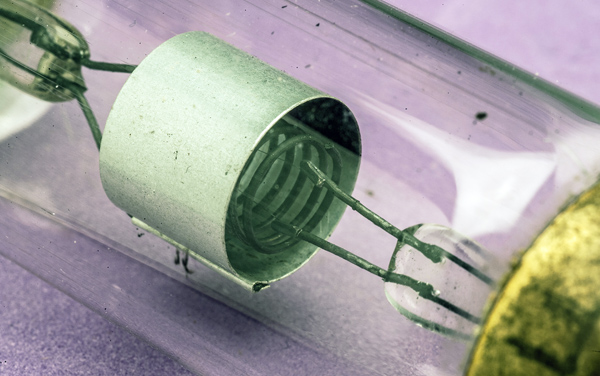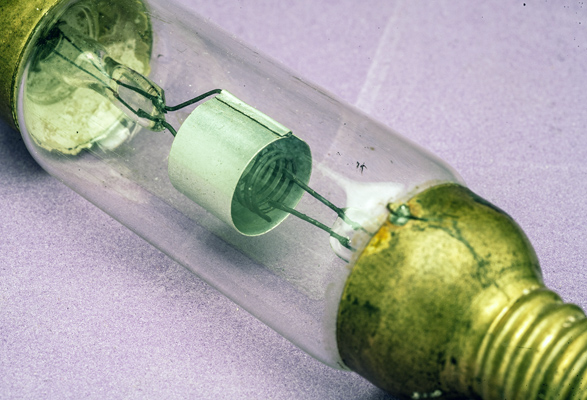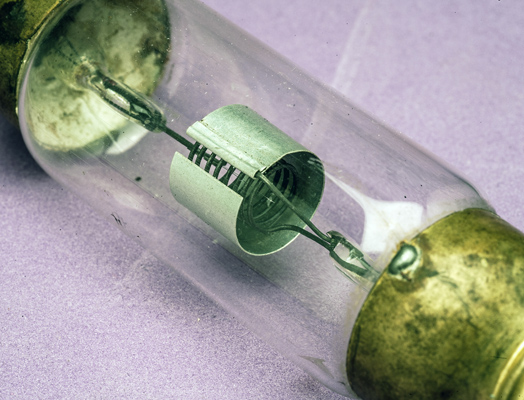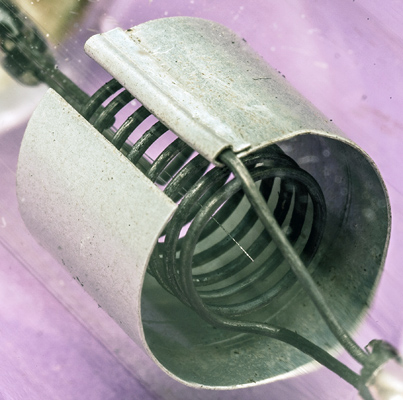
|
This is a most unusual triode with small Edison Screw connectors at either end. It was known as the Holland Lamp and was developed by Metaaldraadlampenfabriek Holland in the period 1917-19.Tyne, page 268: On November 15th, 1917, Army Lieutenant Tolk and Navy Officer DuBois were sent by the Netherlands Ministry of War to the Metaldraadlampenfabriek Holland, a small company in Utrecht. The officers requested the manager, K M E Schuurman von Strijen, to make a series of radio tubes in secret. They gave him a Telefunken EVN94 taken from a German hydroplane which had landed in the Netherlands. They asked for electrically similar tubes. Engineer F B A Princssen carried out the work and noted every progress. It is preserved in the Saga of the vacuum tube. Prinssen obtained a Dutch patent on the feature of using molybdenum for leadouts, Nr. 911 1918 5176. November 22nd of 1917 the first two tubes operated successfully with 120 Volts on the anode without any trace of blue glow. In December 11th the tube became the cylindrical anode and grid. For the public the 'Holland Tube' was made from 1923 to 1928.
The filament is a single self supporting V with both ends attached to one end cap. The grid and anode are also supported at one end only.
The sheet anode is folded over to enclose the support rod.
The anode is not a closed cylinder and the helical grid can be seen within. The wire diameter of the grid is substantial. It can be seen that the filament is broken.
The broken end of the filament.Thanks to Herm Willems for identifying this exhibit.The wide glass tube envelope is 25 mm in diameter, and including the bases is 117 mm tall.Reference: Herm Willems, 1047 and 3002. Type Holland Lamp was first introduced in 1918. See also 1918 adverts. |
Updated February 17, 2022.
|
|